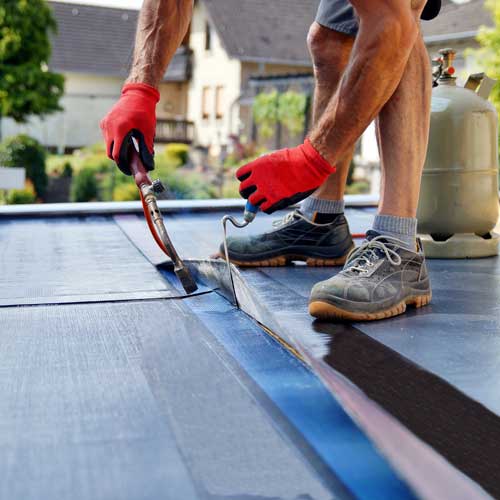Flat-roofed buildings can be more difficult and expensive to insure than other designs. David McKechnie, Complex Claims Team Leader at Markel UK, explains why and what can be done about it.
Flat roofs have been used on buildings for a number of years. However, flat roofs are often classed as being of non-standard construction by insurers, making them more complex and costly to cover. There are various reasons for this, explains David McKechnie.
Wet weather
“Flat roofs are typically constructed of timber frames and covered in resistant material such as bitumen or felt,” David says. While often cheaper, these materials can have a shorter lifespan than a sloped, tiled roof.
“A flat roof will collect water and other debris on its surface rather than sliding off, as it would from a sloped roof. Flat roofs are therefore likely to deteriorate much more quickly and require regular maintenance to keep them in good condition. Without routine maintenance, says David, “rainwater could find its way into the building, damaging its internal fabric and its contents. Frequent wet weather makes this a particular concern in the UK.”
In some cases, and if the damage inside was severe, it could also lead to significant disruption for the business with perhaps a loss of income should the premises have to close whilst repairs are carried out”.
There is another downside to having a flat roof as it could provide easy access to other parts of the building which would, ordinarily, be difficult to access, for example, a first-floor window.
Insurance considerations
All this means there are insurance implications to be aware of. “When taking out buildings insurance, you’ll likely be asked to confirm if any of your roofs are flat, and if so, what percentage of the total roof space is flat,” David explains. “It’s important to disclose this information accurately, or it could lead to complications should a claim arise”.
“As flat roofs are more susceptible to damage, insurers will want to understand the construction method, age and maintenance plans are in place to determine the extent of cover they wish to offer. They may seek to restrict or exclude damage to flat roofs and may provide cover only if the roof is less than 10 years old, for example. A requirement to keep the roof well-maintained may also be a requirement of the cover being offered.”
What can be done?
A well-maintained roof will not leak, says David, but one-off events like storms or falling debris can still cause damage. Maintenance is therefore key. “If you have a flat roof, ensure it’s checked regularly to make sure it remains in a good condition” – during the drier months when extreme weather is less likely.
“It’s important to bear in mind, however, that even the most well-cared-for flat roof is unlikely to remain in good condition beyond a decade,” David says. Installing a flat roof may be cheaper in the short-term, but “remember to budget for the cost of replacing it, potentially every ten years. Using good-quality materials will save you money in the long run.”
